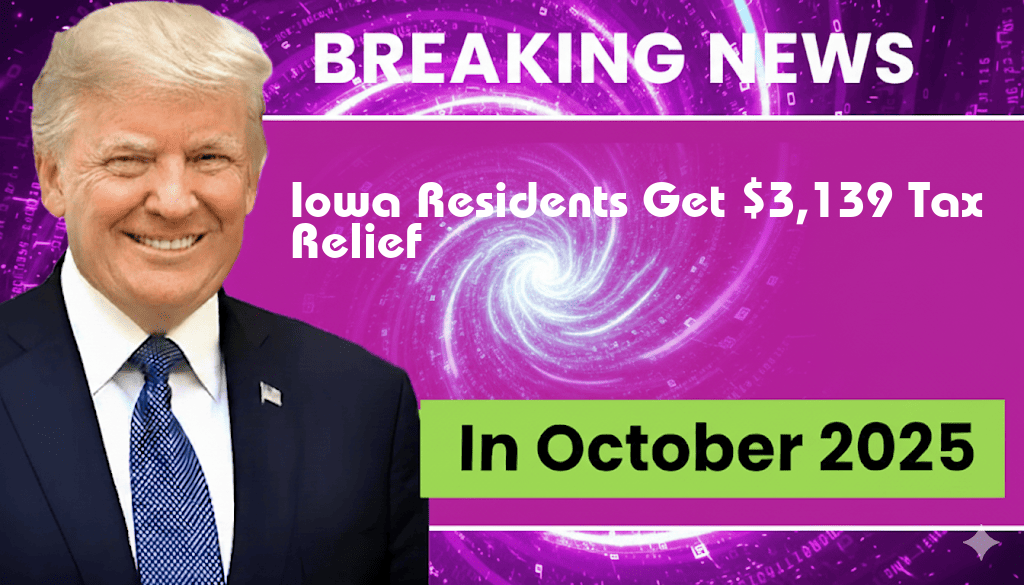Iowa Residents to Receive $3,139 Tax Relief from Trump’s Tax Plan
Residents of Iowa are set to benefit from a substantial tax relief package stemming from the tax reforms implemented during Donald Trump’s presidency. According to recent calculations by the Iowa Department of Revenue, the average taxpayer in the state will receive an estimated $3,139 in tax relief. This windfall is largely attributed to changes in federal tax policy, which has significantly reduced tax burdens for many households. The adjustments, effective for the tax year 2023, come at a pivotal time as residents navigate economic challenges, including inflation and rising living costs.
Details of the Tax Relief
The tax relief stems from the Tax Cuts and Jobs Act (TCJA) passed in late 2017, which aimed to stimulate the economy by lowering individual tax rates and increasing the standard deduction. In Iowa, these changes have resulted in a noticeable decrease in the amount residents owe on their annual tax returns. The primary components of this relief include:
- Lower Tax Rates: A reduction in the marginal tax rates for various income brackets.
- Increased Standard Deduction: The standard deduction has nearly doubled, allowing more taxpayers to benefit without itemizing deductions.
- Child Tax Credit Expansion: Enhanced credits for families with children, which directly impacts lower and middle-income households.
Economic Impact on Iowans
The influx of tax relief funds is expected to have a positive ripple effect on the Iowa economy. With more disposable income, residents may spend on local businesses, contributing to economic growth. According to economists, the impact of the TCJA has been particularly beneficial for middle-income families. A report by the Forbes highlights that families earning between $50,000 and $100,000 annually will see the most significant benefits from the tax plan’s provisions.
Challenges and Considerations
While the tax relief is welcomed by many, it is not without its criticisms. Some experts argue that the long-term effects of the TCJA could lead to increased federal deficits and potentially higher state taxes in the future. Furthermore, debates continue regarding the fairness of tax relief distribution across different income levels. Critics point out that while middle-income families benefit, higher-income households may see even larger reductions, raising questions about equity in tax policy.
Future Tax Policy Discussions
As the 2024 election approaches, tax policy is likely to remain a contentious topic both in Iowa and nationwide. Candidates are expected to debate the merits and drawbacks of the TCJA extensively. The Iowa Republican Party has expressed strong support for Trump’s tax policies, emphasizing their role in fostering economic growth. Conversely, Democratic candidates are calling for reforms to address perceived inequalities in the tax system.
Conclusion
Iowa residents are poised to receive significant tax relief as a result of Trump’s tax reforms, with the average taxpayer expected to gain $3,139 this year. While many view this as a much-needed boost amid economic uncertainty, ongoing discussions about the long-term implications of such tax policies will shape future legislative agendas. For more information on tax policy and its effects, visit Wikipedia.
| Income Bracket | Average Tax Relief |
|---|---|
| Under $50,000 | $2,000 |
| $50,000 – $100,000 | $3,139 |
| Over $100,000 | $4,500 |
Frequently Asked Questions
What is the amount of tax relief Iowa residents will receive?
Iowa residents will receive $3,139 in tax relief as part of Trump’s tax plan.
Who will benefit from the tax relief in Iowa?
The tax relief will benefit all qualifying Iowa residents under the provisions of Trump’s tax plan.
When will the tax relief be issued to residents?
The specific date for when Iowa residents will receive their tax relief has not yet been announced, but it is expected to be distributed within the current tax year.
How does Trump’s tax plan affect other states?
While the article focuses on Iowa, Trump’s tax plan includes provisions that may also provide tax relief to residents in other states, though the amounts and eligibility may vary.
What are the eligibility criteria for residents to receive tax relief?
Residents must meet specific eligibility criteria outlined in Trump’s tax plan, which typically includes income thresholds and filing status.

Leave a Reply